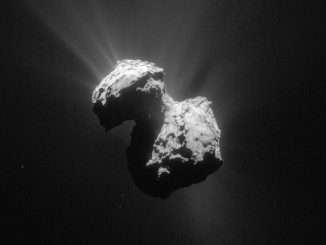
Bodies in the extreme outer solar system that never come close enough to the Sun to be affected any any significant manner by the gravity of Neptune and the other major planets are known as “detached objects.” A prime example is the dwarf planet Sedna. In recent years, astronomer Mike Brown and others have suggested the gravity of an as-yet-undetected world – Planet Nine – is needed to explain the orbits of several of these distant bodies.
Searches for Planet Nine are well underway, but so far the presumed planet has eluded detection.
Now, astronomers at the University of Colorado at Boulder say the orbits of Sedna and other seemingly perturbed bodies in the extreme outer solar system may have ended up on the observed trajectories due to their collective gravity, jostling against each other and space debris.
“Once you get further away from Neptune, things don’t make any sense, which is really exciting,” said CU Boulder assistant Professor Ann-Marie Madigan, who led a team of researchers looking into the orbits of Sedna and other detached bodies.
Sedna, discovered by Brown, Chad Trujillo and David Rabinowitz in 2003, is more than 8 billion miles from the Sun. It is a bit smaller than Pluto and takes more than 11,000 years to complete one trip around the sun. Like other such detached objects, Sedna moves sedately through a huge circular orbit that keeps it well away from Neptune and other planets that might otherwise perturb it.
Jason Fleisig an undergraduate in astrophysics at CU Boulder who was developing computer simulations to model the orbits of such detached objects noticed “a pileup of the orbits of smaller objects to one side of the Sun. These orbits crash into the bigger body, and what happens is those interactions will change its orbit from an oval shape to a more circular shape.”
Those small-scale interactions, Madigan and Fleisig suggest, could explain how Sedna and other detached objects were coaxed into their current orbits without needing Planet Nine. They outlined their research at the 232nd meeting of the American Astronomical Society in Denver, Colorado.



